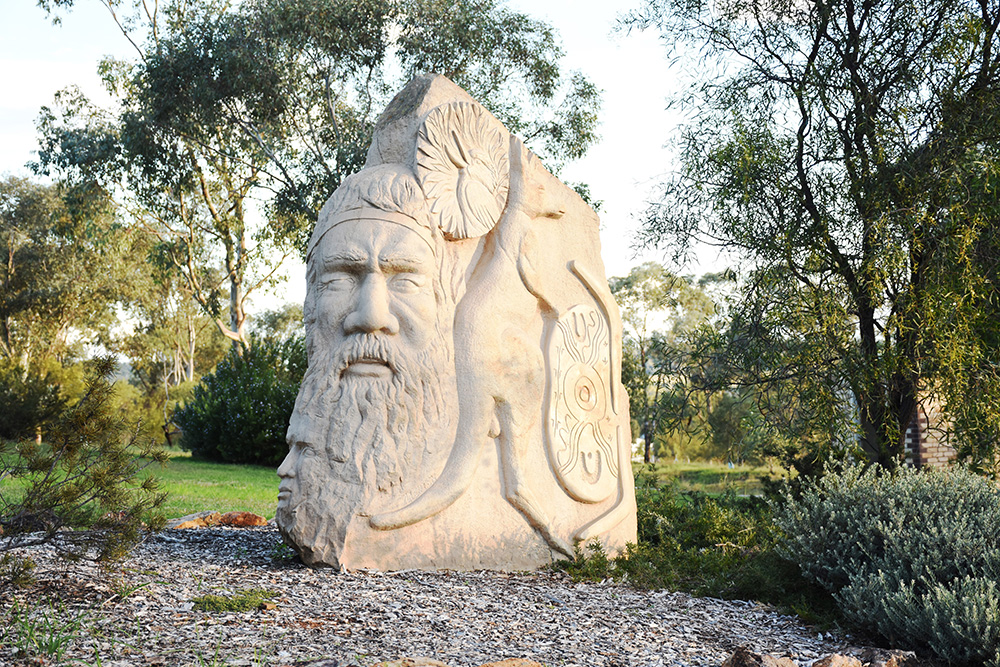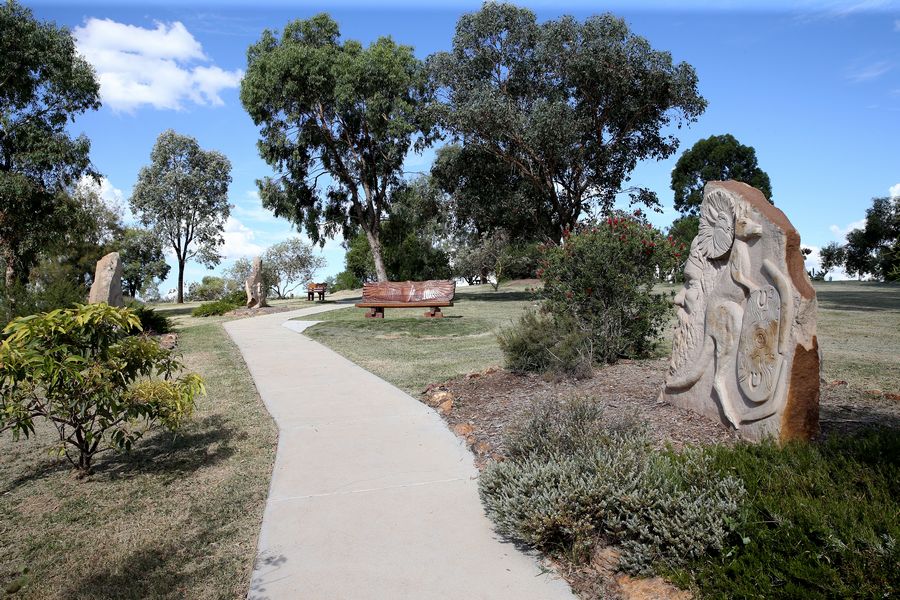The Coal Miner
This stone illustrates a coal miner labouring underground pushing a skip loaded with coal. Coal has been an integral part of the fabric of life in Gunnedah since 1880. On the other side is the Rainbow Serpent heading underground, where the energy of the sun has been stored in coal. In the centre, a piece of coal in the shape of the sun radiates the heat and light trapped within. Often a symbol of the underworld, the Serpent leads us from this stone to the next.
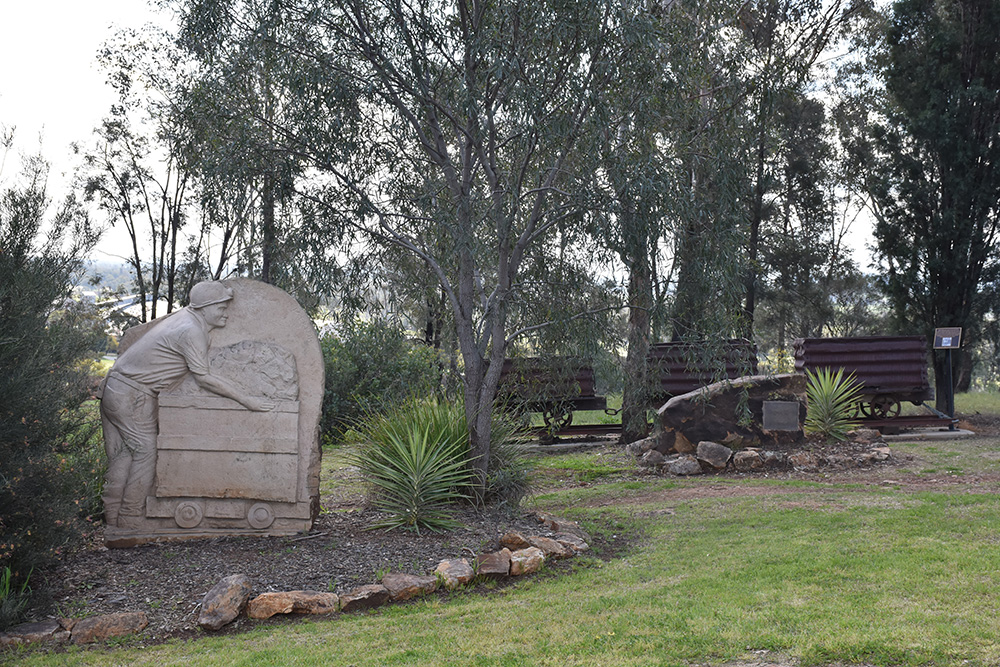
Pioneer Women
The first settlers crossed the Great Dividing Range from the Hunter Valley in 1827. The initial settlement by the Namoi River was known as “the Woolshed”. Later the name was changed to Gunnedah, an Aboriginal world said to mean “Place of White Stones”. By the late 1840s a large part of the Gunnedah district had been taken up by squatters and their families, occupying runs or stations. The women suffered great hardship, facing a harsh environment, loneliness, and isolation. Despite the social restrictions of their time, they all left a lasting mark on this land. In a hostile environment they established fertile vegetable and ornamental gardens, introducing new perfumes and colours, turning the dry, alien bush into a more familiar, kindly and nurturing environment, all while looking after their family and homestead. The continuation of the Serpent from the Coal Miner forms the symbol for woman. The overlapping gum leaves suggest the theme “woman in the bush”. In many cultures, pas and present, the Serpent has symbolised women and traits associated with women: fertility, rejuvenation, sacred knowledge, and connection to the powers of nature through their ability to give birth to new life. Pioneer women brought these qualities to settled life in the bush.
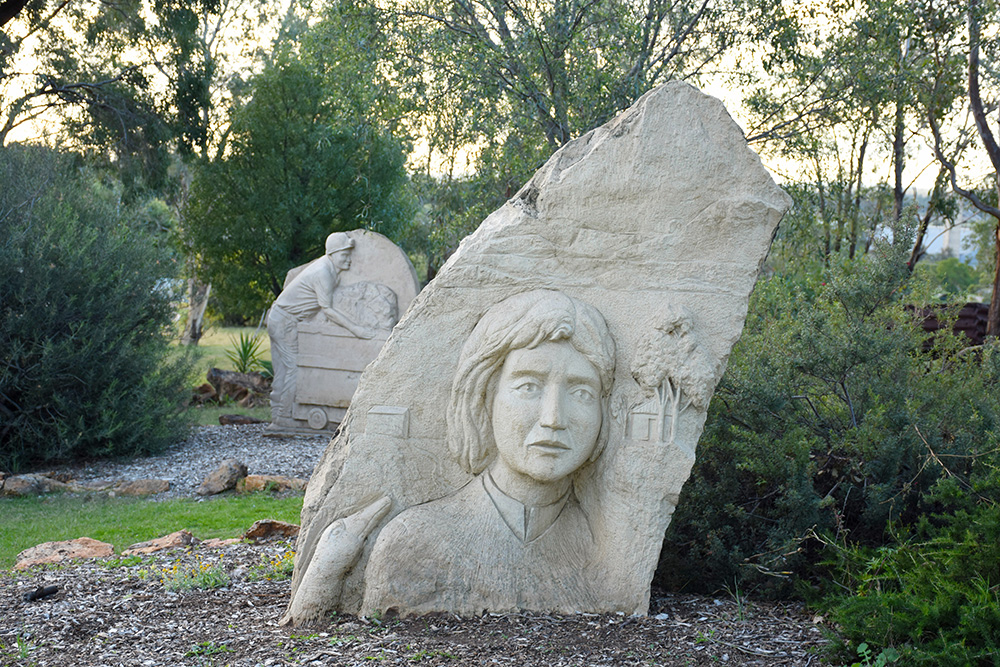
Agriculture
The early settlers brought their flocks of sheep onto the rich grazing lands of the Liverpool Plains. The first crop of wheat was grown in 1965 but it was nearly 30 years before wheat was to become a substantial primary product in the area. By early 1940 Gunnedah was the largest wheat receival area in Australia. Cropping was confined to the sloping red soils until after World War II when increased mechanisation and new wheat varieties allowed the cultivation and cropping of the black soil plains. Grazing became concentrated on the slopes with cattle becoming the dominant livestock after the peak of the wool boom in the 1950s. The serpent theme enters this stone as the symbol of agricultural fertility. This underground creature’s powers are associated with the sprouting of new growth, here depicted in the typical twin-leaf form of seedling plants. Fertility combines the nutrients present in the earth with the energy of the sun, and here the Serpent joins two complementary constituents necessary for agricultural life. The Serpent’s back suggests the familiar hills surrounding the fertile Gunnedah plains.
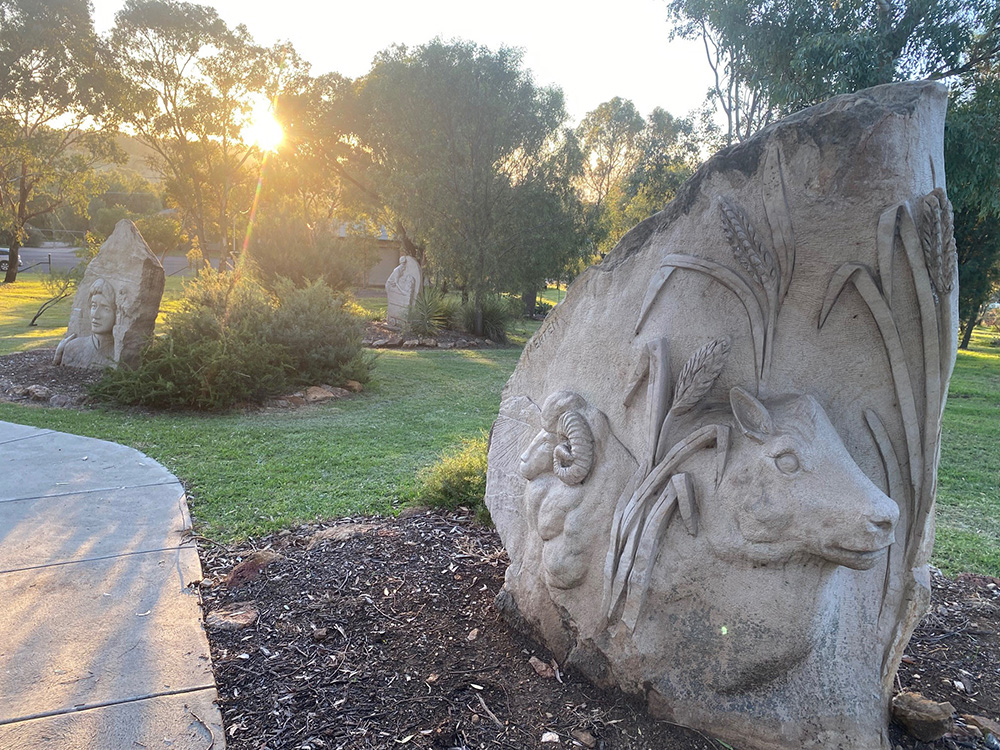
Red Chief
The Red Chief was the legendary chief, Cumbo Gunera, also known as the Red Kangaroo, whose story was popularised in the mid-20th century by novelist Ion Idriess in his book “the Red Chief”. The book was based on the story told by “Old Joe” Bungaree, a member of the Gunn-e-darr tribe. This stone features a red kangaroo, a kookaburra, the Red Chief's shield and boomerangs, designed and carved with the help of Ron Long and Mick Horne, members of the local Aboriginal community. A portrait of Bungaree can be seen in the lower left corner. In the centre of the shield is a symbol for the Place of White Stones, representing Gunnedah. On the reverse side is the Dreamtime story of how the Rainbow Serpent created the native animals from the colours of its skin. Here, the body and tail are depicted, with the Aboriginal symbol for water carved at the top of the stone.
